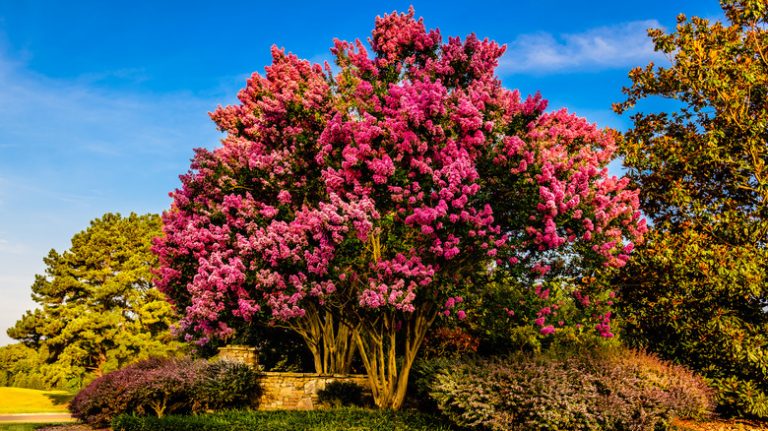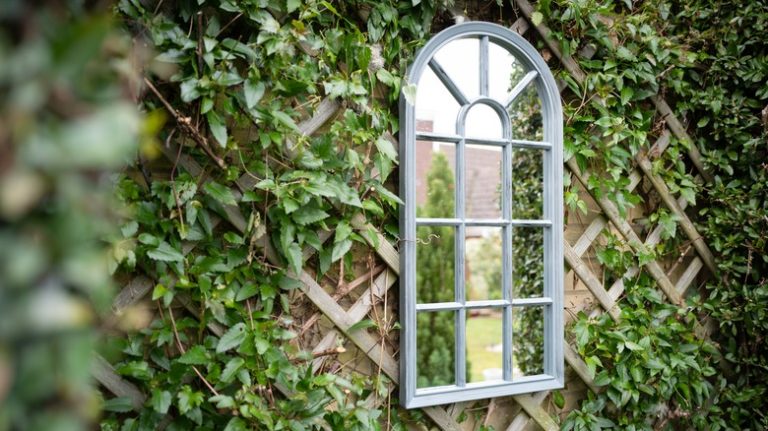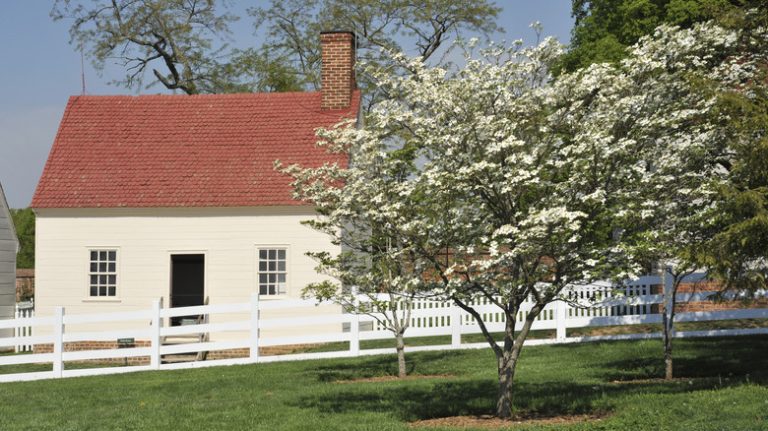The Weeping Japanese Maple, also known as Acer palmatum “Dissectum,” is a stunning tree that adds a touch of elegance to any landscape. With its delicate branches and gracefully falling leaves, this tree is a true standout in gardens and front entryways.
One of the most popular forms of the Weeping Japanese Maple is the Acer palmatum “Dissectum Viridis.” This variety features bright green, finely divided leaves that turn a purplish-red color in the fall. It is a perfect choice for those looking to add a splash of color to their landscapes throughout the year.
Another popular variety is the Acer palmatum “Shirasawanum Aureum.” This cultivar is known for its special brightening effect, with its golden-yellow leaves lighting up the garden. The leaves are deeply divided and have serrated margins, creating a unique and eye-catching look.
One of the reasons why Weeping Japanese Maples are so beloved is because they are relatively easy to grow. They can be planted in a wide range of climates and soil types, making them suitable for many garden’s needs. They need to be watered regularly, especially during hot summers, to ensure proper growth. It is best to prune them in late winter or early spring to maintain their desired shape and size.
If you haven’t already, consider adding a Weeping Japanese Maple to your garden. With their year-round beauty, elegant form, and colorful foliage, they are sure to become a cherished addition to your landscape.
For more information about Weeping Japanese Maples or if you have any questions, please contact us. We would be happy to show you our wide variety of cultivars and help you choose the best one for your garden’s needs.
Planted Just Past the Garden’s Entry Gate This Weeping Laceleaf Japanese Maple is an Iconic Beauty in Every Season
The Weeping Laceleaf Japanese Maple, scientifically known as Acer palmatum var. dissectum, is a popular choice among garden owners who want to add a touch of elegance to their outdoor spaces. Its unique weeping habit and beautiful burgundy leaves make it an iconic beauty in every season.
This variety of Japanese Maple is especially attractive because of its delicate and lacy foliage. The leaves, which are divided into fine threads, create a stunning visual effect. During the spring and summer months, they emerge in a vibrant green color, but please note that the exact shade may vary depending on the specific cultivar.
One of the most popular cultivars of the Weeping Laceleaf Japanese Maple is Acer palmatum var. dissectum ‘Crimson Queen’. This variety features deep red foliage that transforms into shades of orange and yellow during the fall season, making it a true spectacle to behold.
Growing a Weeping Laceleaf Japanese Maple can be challenging, as it requires specific care and attention. These plants prefer a well-drained soil with a slightly acidic pH level. They also thrive in partial shade, especially during the hot summer months. It is important to water them regularly, ensuring that the soil remains moist but not waterlogged.
- Start by choosing a planting location that provides protection from strong winds and direct sunlight.
- Before planting, prepare the soil by incorporating organic matter, such as compost or peat moss.
- During the first few years, it is essential to monitor the growth of the tree and prune any dead or damaged branches. This will help shape the tree and encourage healthy growth.
- Trimming is best done in late winter or early spring before new growth occurs.
- As the tree matures, it may require less pruning and can be left to develop its natural form.
The Weeping Laceleaf Japanese Maple is native to Japan and Toyama Prefecture. It has been popular among garden owners since the early 1900s. In Japan, it is known as “Ryusei” or “Snowflake” maple, referring to its unique and beautiful appearance during the winter months.
In colder zones, it is advisable to protect the tree from harsh winter weather. This can be done by applying a layer of mulch around the base of the tree, or by wrapping the branches with burlap or a similar material.
Overall, the Weeping Laceleaf Japanese Maple is a remarkable tree that adds beauty to any garden or landscape. Its striking foliage and graceful weeping habit make it a true standout. If you decide to plant one, be prepared to receive compliments and inquiries from admiring passersby.
Weeping Japanese Maple
The Weeping Japanese Maple, also known as Acer palmatum var. dissectum, is a variety of Japanese maple that is highly sought after for its unique weeping growth habit. It is often planted at the entry of a home or in a front garden, where its elegant shape and fiery fall color make it a standout feature.
The leaves of the Weeping Japanese Maple are divided into deeply dissected, palmate leaflets. They are typically green in color, though some varieties present with orange-red or purplish-red leaves. In the fall, the leaves turn a vibrant yellow, orange, or burgundy color, adding a splash of color to any garden.
The Weeping Japanese Maple is a small tree, reaching a mature height of around 10 feet, with a spread of 12 feet or more. It is well-suited to small garden spaces, where its compact size and weeping habit can be fully appreciated. The branches of this variety gracefully cascade down, creating a curtain-like effect that is truly captivating.
Japanese maples, including the Weeping Japanese Maple, are hardy in USDA hardiness zones 5-8. They prefer partial shade and well-drained soil. When planted in the right conditions, they are relatively low-maintenance and can thrive for many years.
| Common Name | Scientific Name | Leaf Color |
|---|---|---|
| Weeping Japanese Maple | Acer palmatum var. dissectum | Green, orange-red, purplish-red, yellow, orange, burgundy |
If you are considering adding a Weeping Japanese Maple to your garden, be sure to find a reputable nursery or garden center that can provide you with healthy plants. The shape and growth habit of each tree can vary, so it’s important to choose one that matches your preferences and the specific architecture of your garden.
Before planting your Weeping Japanese Maple, be sure to prepare the soil by amending it with organic matter and ensuring good drainage. Dig a hole that is slightly larger than the root ball and gently place the tree in the hole, making sure it is level. Backfill the hole with soil, firming it gently around the roots. Water the tree thoroughly after planting and mulch around the base to help retain moisture.
While the Weeping Japanese Maple is relatively low-maintenance, it may require some pruning to maintain its shape. This is best done during the winter months, when the tree is dormant. Prune back any branches that have become too long or are crossing over each other, making sure to cut just above a leaf bud.
The Weeping Japanese Maple is a beautiful and special tree that can bring a touch of elegance to any garden. With its unique weeping growth habit and stunning fall color, it is sure to be a standout feature that will impress every visitor to your home.
For more details about the Weeping Japanese Maple or to inquire about purchasing one, please contact your local nursery or garden center. They will be able to provide you with specific information about the varieties they have available and help you choose the perfect one for your garden.
Weeping and Laceleaf Colors and Leaf Shapes
In the world of Japanese maples, there are countless varieties that showcase different colors and leaf shapes. From the vibrant and eye-catching to the subtle and elegant, this beautiful species offers a wide range of options for any garden or landscape.
One popular variety is the Weeping Japanese Maple, known for its cascading branches that create a graceful and weeping effect. Its delicate foliage, with small leaves that drape down towards the ground, adds a touch of elegance to any outdoor space. The Ryusei Maple, a synonym for the Weeping Japanese Maple, is another stunning option for those who want to add a unique touch to their garden.
On the other hand, the Laceleaf Japanese Maples, also known as the Acer palmatum dissectum, showcase beautiful foliage with finely dissected leaves that resemble lace or delicate fern fronds. Their feathery texture and unique leaf shape make them stand out in any garden.
When it comes to colors, Japanese maples offer a wide range of options. Some varieties, like the Bicolor Laceleaf Maple, exhibit leaves with two distinct colors, adding a vibrant and eye-catching element to any landscape. Others, like the Snowflake Maple, have leaves that display stunning white variegation, creating a striking contrast against the green foliage.
Unlike their broadleaf counterparts, Japanese maples do not show their true colors until they reach a certain age. It may take a few years for the young plants to fully develop and display their vibrant hues. However, the wait is worth it, as these stunning maples can bring a burst of color to any garden.
Care is important when it comes to maintaining the health and beauty of your Japanese maple. Be sure to give it a well-drained soil and place it in a spot with partial shade, where it can receive a few hours of direct sunlight each day. Regular watering and occasional pruning are also necessary to keep the tree in optimal condition.
For those who want to create a stunning focal point in their garden, adding a Weeping or Laceleaf Japanese Maple is a great option. The unique colors, leaf shapes, and elegant branching of these trees can transform any outdoor space into a work of art.
So, whether you are a seasoned Japanese maple enthusiast or just starting to explore this beautiful species, there is a variety out there that will suit your taste and the style of your garden. Don’t be afraid to experiment with different colors and leaf shapes to create a truly unique and beautiful landscape.
Laceleaf and Weeping Japanese Maple Varieties
When it comes to the elegance and beauty of Japanese Maples, laceleaf and weeping varieties are among the most sought after. These stunning trees can add a touch of grace to any garden, with their delicate foliage and unique growth habits.
One of the most popular laceleaf varieties is Acer palmatum ‘Dissectum’, commonly known as the Laceleaf Japanese Maple. This variety is known for its finely dissected leaves that resemble lace, hence the name. The leaves are typically a vibrant orange-red color in the fall, enhancing the beauty of any garden landscape. Laceleaf Japanese Maples are best planted in zones 5-8, although they can survive in zones 4 and 9 with proper care.
Another popular variety is Acer palmatum ‘Crimson Queen’, which is a weeping form of the Japanese Maple. This variety has a cascading habit and its deeply lobed leaves are a rich purplish-red color. Crimson Queen Japanese Maples are known for their graceful and elegant appearance, making them a striking addition to any garden. They are also best planted in zones 5-8.
Laceleaf and weeping Japanese Maples require special care and attention. They prefer to be planted in well-drained soil in a spot that receives partial shade. They need regular watering, especially during hot summer days when they are more likely to dry out. Pruning should be done in late winter or early spring to maintain their shape and enhance their growth. It is important not to prune them too heavily, as they have delicate branches that can easily snap.
If you are a fan of Japanese Maples and want to add some variety to your garden’s landscape, laceleaf and weeping varieties are definitely worth considering. Their unique forms and vibrant foliage will surely make them stand out. So why not click here to find a Japanese Maple variety that suits your needs and preferences?



